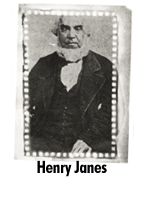

We're more fun than a history book, but just as valuable if history is your passion. Janesville was named in 1836 after early settler Henry Janes who traveled to this area, following the Black Hawk War of 1832. Proud of their heritage, Janesville's residents have shown great dedication in the restoration of the community's early buildings and homes. Spend an afternoon downtown visiting antique shops and viewing the historic districts. Janesville has 2,448 buildings listed on the National Register of Historic Places. One highlight is the Tallman House, significant as Wisconsin's only private residence where Abraham Lincoln slept. The Helen Jeffris Wood Museum Center features traveling exhibits and special events. Janesville's past can be revisited through a variety of festivals and events which the Rock County Historical Society and other organizations frequently host.
For more information on Lincoln-Tallman House and Helen Jeffris Wood Museum Center see our attraction's descriptions.
For those interested in the history of Janesville, the Hedberg Public Library offers many digital resources. Click here to be directed to their Local History page. The University of Wisconsin Madison Libraries Digital Collections also contains a great deal of information about Janesville. Click here to be directed to the Janesville page on their site.
For a lesson in history and architecture all you need to do is walk down our city streets. Janesville features 13 historical districts that make perfect walking tours. Brochures on these individual districts can be purchased at the Janesville Area Convention & Visitors Bureau office. These brochures are also available for download at the University of Wisconsin Madison Libraries Digital Collections website. Click here, scroll to the bottom and click "MORE" to see the list of Walking Guides to Historic Districts.
The twin towers of St. Mary's Catholic Church mark the location of the Prospect Hill Historic District. In the first decades of the city's growth, the steep hills on the east side of the Rock River restricted road building and house construction. Consequently, like Courthouse Hill to the south, this area enjoyed its greatest period of development at the turn of the century as the streets of central Janesville neared completion.
For 86 years, the centerpiece of Courthouse Hill was the French Second Empire Style Rock County Courthouse. The tall mansard roof of the impressive brick and stone building was a prominent element on the Janesville skyline. It was razed for construction of the current courthouse in 1957.
Extending along the east bank of the Rock River, the South Main Street Historic District retains much of its mid-to-late-nineteenth-century character. Locally quarried or manufactured building materials are evident in the brick, cast iron, and stone trim of many early storefronts, particularly at the upper stories.
The Look West Historic District is part of Janesville's old First Ward, an early neighborhood with connections to the city's rail and manufacturing interests. The great variety of architecture attests to the diversity of its nineteenth-century population.
A rich display of ideas of late nineteenth century masons and carpenters is found in the West Milwaukee Street District. Cream colored brick and stone-trimmed windows and parapets are distinctive features of many commercial buildings along this street.
One of the oldest residential areas, the Old Fourth Ward Historic District, includes the early settlements of Rockport and Monterey near the lower dam, as well as an area of high styled houses and churches downtown.
